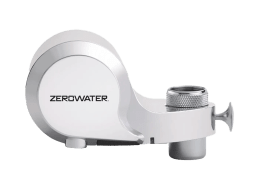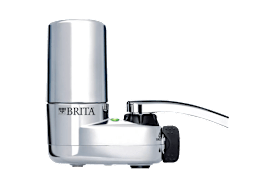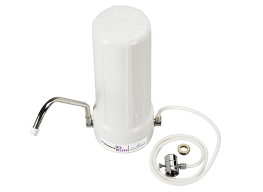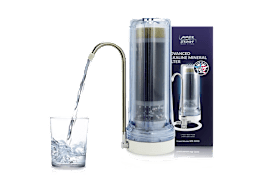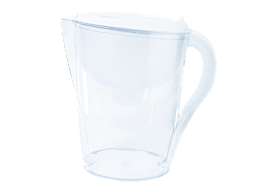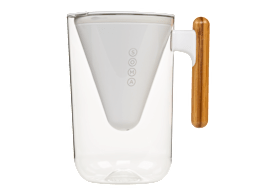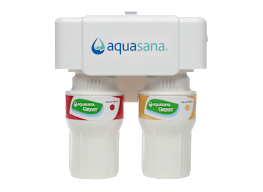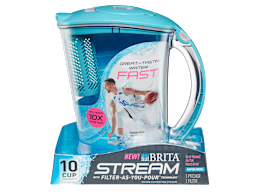How to Make Sure Your Water Filter Really Removes Lead
Devices certified to remove lead from drinking water go through rigorous tests, but some factors could hamper their effectiveness
A problem with high levels of lead in Newark’s drinking water led the city last year to distribute water filters to residents. But that plan hit a snag this week when the Environmental Protection Agency alerted the city that drinking water in two of three homes it tested still had high levels of lead, despite the filters.
The EPA advised Newark residents to stop drinking tap water and urged the city to supply bottled water instead (though that solution also ran into problems when the city learned some of the water had passed its expiration date).
It’s unclear why the two homes’ filters—which are certified by nationally approved labs and were successfully used during the Flint, Mich., water crisis—weren’t removing lead at expected levels in these tests. “This is pretty surprising for us,” says Rick Andrew, the director of development at NSF International, one of the organizations that set the industry standards to water filter certification. “We’ve never seen this happen before, and it’s definitely an unusual situation.”
Want cleaner water from your sink’s tap? Find the best under-sink water filters from our tests.
Use the Right Kind of Filter
The filters distributed in Newark were activated carbon filters certified to remove lead. But not all filters can do that.
So, to start, make sure the filter you use says it is certified by the NSF, the WQA, or another certifying agency. Look for those that say they meet Standard 53, for lead. CR’s water filter ratings of pitcher filters include two certified ones that we confirmed effectively remove lead.
Check Your Lead Levels
“Activated carbon has a lot of surface area with nooks and crannies where chemicals can stick,” says Shawn McElmurry, a Wayne State University professor who did extensive field research during the Flint water crisis. “But it’s not infinite.”
Imagine throwing tennis balls at a wall of Velcro able to hold 100 balls. The more you throw, the harder it will be to find a place for the ball to stick, and eventually, there’ll be no room left at all and additional balls will bounce off.
To add to the chaos, McElmurry says there could be other contaminants in the water competing for those attachment sites. And if some of those contaminants have more mass or energy, they could knock some lead loose—like throwing softballs at your Velcro wall of tennis balls.
The only way to know what’s in your water and the levels of lead you’re dealing with, if any, is to get it tested. The EPA recommends using a lab certified by your state. Some state or local health departments offer free water test kits. Testing typically costs $20 to $100.
Lead filters aren’t tested with concentration levels beyond 150 ppb, so if your lead contamination exceeds that, or you have many other contaminants, you could consider using a reverse osmosis filtration system. They’re pricey though—some cost $1,000 or more, plus annual costs for parts and labor to have a professional sanitize and check the system. And they sometimes require special plumbing.
Make Sure Your Filter Is Properly Installed
Faucet-mount filters, like those used in Flint and Newark, typically cost $20 to $40 and require several installation steps that can go awry.
“These filters are not easy to get onto the faucets,” McElmurry says. “We found that a lot of people in Flint with arthritis or poor motor function in their hands couldn’t attach them.”
In addition, faucet-mounted filters often require special adapters or don’t fit on faucets at all. If the filter or adapter doesn’t sit properly in the housing, some water could bypass the filter and go straight into your drinking glass.
To attach these filters, you first have to remove the faucet’s aerator—a small disc screwed onto the faucet tip that controls water flow—to reveal threads below. The filter will screw on most faucets with external threads, but those with internal threads require an adapter. If none of the adapters fit perfectly, don’t force it. Instead, call the manufacturer and ask for others to try. Make sure the filter is screwed on level, too, then tighten by hand, not pliers, which could break it.
Replace Old Filters
“It’s so simple, but a lot of people don’t do it,” says NSF’s Andrew. Yet replacing the filter once it’s maxed out is the No. 1 way to ensure lead continues to be filtered out.
Most faucet-mounted filter cartridges can filter about 100 gallons of water; pitcher filters, about 40 gallons. In both cases, the filters usually have electronic indicators that signal when it’s time for a new filter cartridge, based on either how much time has passed or how much water has flowed through. But they are powered by non-replaceable batteries that will eventually stop working and stop telling you when to change the filter. Once that happens, you’ll either need to purchase a new device or keep track manually by, for example, setting a reminder on your calendar.
“Activated carbon filters will reach a point where they cannot retain anymore lead, so if you use it long enough, lead could get past the filter,” says James Dickerson, CR’s chief scientific officer.
Use Cold Water
“Heat can really mess with the chemical-physical process involved in activated carbon’s ability to adsorb contaminants,” Dickerson says.
For one thing, high temperatures can interfere with the bonds that cause lead and other chemicals to stick to activated carbon. For another, they can increase how quickly lead moves through water, making it harder for filters to capture it. Last, it makes it easier for bacteria to grow on the filter, which can interfere with the filter’s ability to remove lead.
If you accidentally turn on the hot water for a few seconds, the filter should be okay as long as you quickly switch to cold. But discard that hot filtered water and flush the filter with cold water. If you let the hot water run a long time or used very hot water, replace the filter immediately.
Check for Damage
“If there’s a crack in the carbon block or a malfunction in the device itself, it could create a straight path through or around the filter,” McElmurry says.
Some filters may come with manufacturing defects. Or you could damage it by accidentally dropping it or exposing it to scalding water, melting the plastic filter housing.
In some cases, excess sediment in your water can build up and clog the system, preventing proper sealing and water flow. “Just a few particles can clog up the flow of water to the point where it’s just a trickle,” says Dickerson. “These water filters depend on water pressure to get the water into the filter at a specific velocity, move it around in there, and get it out.”
What’s in Your Water?
Do you have bad-tasting water? Consumer Reports experts Perry Santanachote and James Dickerson explain how to find out about water testing and the best filtration systems.

















